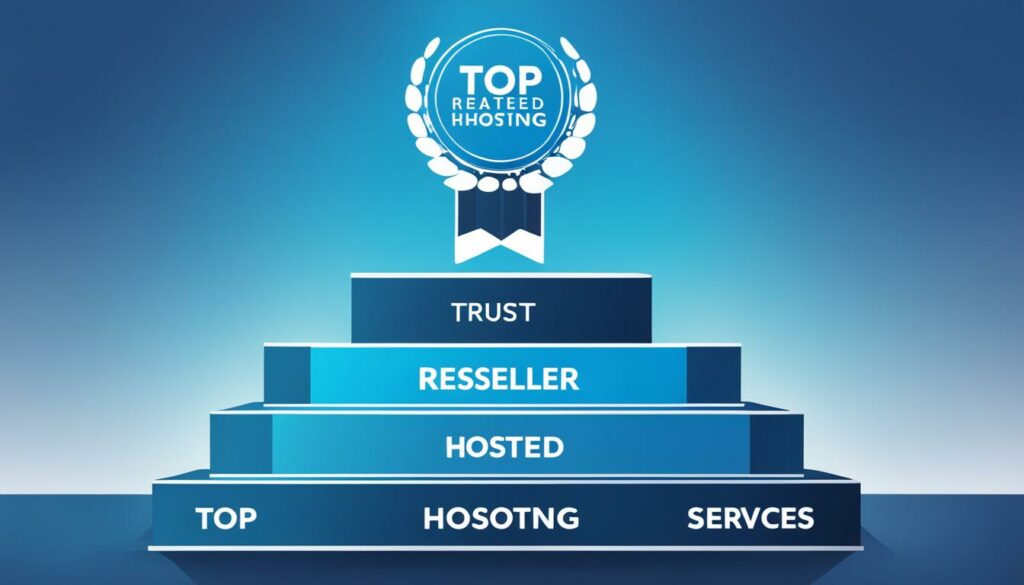Protecting your hosting environment from DDoS attacks is crucial in today’s digital landscape. These attacks can lead to significant financial losses and downtime, jeopardizing your online presence and reputation. To ensure the security and availability of your website, it’s essential to implement effective DDoS protection measures.
DDoS mitigation solutions are designed to safeguard your hosting infrastructure from the ever-evolving threat landscape. By deploying multi-layered defense mechanisms, you can protect against different types of attacks targeting various layers of your system.
Educating your employees on the dangers of becoming a bot is another crucial step in preventing DDoS attacks. By following best practices and recognizing the warning signs, you can minimize the risk of your devices being compromised and used as part of a botnet.
Identifying and understanding the various types of DDoS attacks is also essential for efficient mitigation. This knowledge allows you to respond swiftly and employ targeted defense mechanisms, mitigating the impact of the attack.
Creating a DDoS attack threat model helps organizations prioritize their protection efforts and evaluate potential risks. By identifying assets to protect, potential attackers, attack vectors, and analyzing the attack surface, you can better prepare for potential threats and minimize vulnerabilities.
When choosing a hosting provider, it’s crucial to select one that offers reliable DDoS protection services. Look for providers that have robust defense measures in place to ensure resilient hosting and safeguard your business from DDoS threats.
Key Takeaways:
- Implement multi-layered DDoS protection solutions to defend against attacks targeting different layers of your hosting infrastructure.
- Educate your employees on how to avoid becoming a bot and recognize the warning signs of a potential DDoS attack.
- Be familiar with the different types of DDoS attacks, such as layer 7 attacks, UDP amplification, and DNS flooding.
- Create a DDoS attack threat model to identify and analyze potential risks, allowing for better preparation and prioritization of protection efforts.
- Choose a hosting provider that offers reliable DDoS protection services and has robust defense measures in place.
Multi-layered DDoS Protection
Traditional methods like increasing network bandwidth or using firewalls are not enough to defend against modern DDoS attacks. To ensure comprehensive protection against these threats, a multi-layered DDoS protection solution is essential. This solution combines multiple modules and layers of defense to safeguard your infrastructure from various attack vectors.
By implementing a comprehensive DDoS protection solution, you can mitigate the risks posed by application-layer DDoS attacks and other sophisticated techniques employed by cybercriminals. This multi-layered approach allows for targeted protection against attacks targeting different layers of your network.
Key Features of a Comprehensive DDoS Protection Solution
- Scalability: The solution should be able to handle varying levels of traffic without any performance degradation, ensuring seamless protection during high-volume attacks.
- Redundancies: Multiple layers of defense and redundancies ensure uninterrupted service availability and minimize the impact of potential attacks.
- Traffic Monitoring: Real-time monitoring and analysis of network traffic patterns enable rapid detection and mitigation of DDoS attacks, allowing for timely responses.
- Business Logic Flaw Detection: Advanced algorithms and machine learning capabilities can identify and neutralize attacks that exploit vulnerabilities in your application’s logic.
- Vulnerability Management: Regular vulnerability assessments and patch management ensure that your systems are protected against known vulnerabilities that can be exploited by attackers.
By incorporating these key features into your DDoS protection strategy, you can enhance the security of your infrastructure and effectively mitigate the risks posed by application-layer DDoS attacks and other advanced threats.
Remember, a comprehensive DDoS protection solution goes beyond traditional methods and provides the necessary defense mechanisms to safeguard your online presence.
Avoid Becoming a Bot
DDoS attacks often involve the use of botnets, which are networks of compromised devices controlled remotely by attackers. To protect yourself and prevent your devices from becoming part of a DDoS botnet, follow these essential steps:
- Keep your devices and software up to date: Regularly update your operating system, applications, and firmware to ensure that you have the latest security patches. This helps protect against vulnerabilities that attackers may exploit to compromise your devices.
- Use strong and unique passwords: Avoid using easily guessable passwords. Create strong passwords that include a combination of uppercase and lowercase letters, numbers, and special characters. Use a unique password for each of your online accounts.
- Be cautious of suspicious emails and attachments: Beware of phishing emails that may trick you into downloading malicious attachments or clicking on malicious links. Verify the legitimacy of emails and only download attachments from trusted sources.
- Utilize reputable anti-malware solutions and VPNs: Install and regularly update reliable anti-malware software on your devices to detect and remove malicious software. Additionally, consider using a virtual private network (VPN) to encrypt your internet traffic and protect your online activities.
By following these preventive measures, you can reduce the risk of your devices being compromised and avoid becoming a bot in a DDoS botnet.
“Keeping your devices updated, using strong passwords, being cautious of suspicious emails, and utilizing reputable security solutions are crucial in preventing your devices from being compromised and used as bots in DDoS attacks.”
To further illustrate the importance of avoiding becoming a bot and the impact of compromised devices in DDoS attacks, take a look at the following example:

| Example: |
Scenario: Sarah’s computer is infected with malware that allows cybercriminals to control her device as part of a DDoS botnet. Implications: Attackers utilize Sarah’s compromised device, along with other bots in the botnet, to launch a massive DDoS attack. This attack overwhelms a popular e-commerce website, resulting in service downtime, financial losses, and customer dissatisfaction. Impact: The e-commerce website experiences a significant loss in revenue due to the inability to serve customers, tarnishing its reputation and customer trust. Sarah’s compromised device becomes part of the cybercriminal network, contributing to the scaling severity of DDoS attacks. |
|---|
Recognize Attack Types
Recognizing the different types of DDoS attacks is crucial for effective mitigation and enhancing your overall security posture. By quickly identifying the attack type, you can respond in real-time and apply targeted defense mechanisms to prevent service downtime and protect your online presence.
Layer 7 DDoS Attack
A Layer 7 DDoS attack specifically targets the application layer of a website or online service. These attacks exploit vulnerabilities in the application itself, overwhelming it with traffic and causing potential disruptions for e-commerce, banking, and startup websites. By identifying and understanding the characteristics of Layer 7 DDoS attacks, you can deploy the necessary countermeasures to defend against these sophisticated threats.
UDP Amplification
UDP amplification is a common technique used in DDoS attacks. It involves attackers sending a large volume of User Datagram Protocol (UDP) packets, typically using open Network Time Protocol (NTP) servers, to overwhelm the target server or network. These amplified attacks can lead to significant service disruptions if not promptly detected and mitigated.
DNS Flooding
DNS flooding is another type of DDoS attack that targets DNS servers. Attackers flood the DNS infrastructure with a massive volume of requests, overwhelming the servers and making it virtually impossible for legitimate users to access the targeted website or service. Identifying DNS flooding attacks is critical to implementing effective defenses and ensuring the availability of your online resources.
To protect your hosting infrastructure from these attack types, it is essential to have robust DDoS protection programs in place. These programs should include real-time monitoring, traffic analysis, and accurate identification of attack patterns. By investing in proactive DDoS defense mechanisms, you can effectively safeguard your online presence and minimize the impact of potential attacks.

| Attack Type | Description |
|---|---|
| Layer 7 DDoS Attack | Targets the application layer and can cause service downtime for e-commerce, banking, and startup websites. |
| UDP Amplification | Involves overwhelming the target server or network with open NTP request traffic. |
| DNS Flooding | Targets DNS servers, making it impossible for legitimate users to access the targeted website or service. |
Create a DDoS Attack Threat Model
Creating a DDoS attack threat model is crucial for organizations to identify and analyze potential risks from DDoS attacks. By following a systematic approach, you can evaluate the risk level associated with different attack vectors and prioritize your protection efforts accordingly.
Identifying Assets to Protect
The first step in creating a DDoS attack threat model is to identify the assets within your organization that need protection. This includes your website, online services, customer data, and any other critical infrastructure that may be targeted by an attacker.
Defining Potential Attackers
Next, you need to consider who the potential attackers could be. This can include hacktivists, competitors, disgruntled employees, or even state-sponsored actors. Understanding the motivations and capabilities of these potential attackers will help you assess the level of threat they pose.
Determining Attack Vectors
Once you have identified the potential attackers, you need to determine the attack vectors they are likely to use. Common attack vectors include volumetric attacks, TCP/IP attacks, application-layer attacks, and DNS reflection attacks. By understanding the different attack vectors, you can better prepare your defense strategies.
Identifying the Attack Surface
The attack surface refers to the vulnerabilities within your organization that could be exploited by an attacker. This includes weaknesses in your network infrastructure, software, or employee practices. By identifying the attack surface, you can take proactive steps to mitigate these vulnerabilities and reduce the risk of a successful attack.
Evaluating Risk Level for Each Attack Vector
Finally, it is important to evaluate the risk level associated with each attack vector. This involves assessing the potential impact of an attack on your organization, taking into consideration factors such as financial losses, reputational damage, and operational disruptions. By evaluating the risk level, you can prioritize your protection efforts and allocate resources effectively.
In conclusion, creating a DDoS attack threat model allows organizations to systematically identify and analyze potential risks from DDoS attacks. By evaluating the risk level associated with different attack vectors, organizations can prioritize their protection efforts and implement robust defense strategies.

Conclusion
DDoS protection best practices are essential for ensuring secure hosting against DDoS attacks and preventing potential disruptions to your online presence. By implementing multi-layered DDoS protection solutions, you can effectively mitigate and defend against these malicious attacks.
One of the key best practices is to educate your employees on bot prevention, as DDoS attacks often involve the use of botnets. Encourage them to keep their devices and software updated, use strong and unique passwords, and remain cautious of suspicious emails and attachments.
Recognizing the different types of DDoS attacks is also crucial. By understanding the warning signs and attack vectors such as layer 7 DDoS attacks, UDP amplification, and DNS flooding, you can better prepare and respond with targeted defense mechanisms.
Creating a DDoS attack threat model allows you to identify and analyze potential risks, helping you prioritize your protection efforts. By reducing the attack surface exposure and choosing reliable hosting providers with robust DDoS protection measures, you can ensure resilient hosting against DDoS threats.
FAQ
Q: What is DDoS protection in hosting?
A: DDoS protection in hosting refers to measures taken to safeguard online presence and prevent Distributed Denial of Service (DDoS) attacks. These attacks can cause severe financial losses and downtime for businesses.
Q: Why is multi-layered DDoS protection important?
A: Multi-layered DDoS protection is crucial because it helps combat the various types of attacks targeting different layers, such as the network layer, transport layer, session layer, and application layer.
Q: How can I avoid becoming a bot?
A: To avoid becoming a bot in a DDoS botnet, keep your devices and software up to date, use strong and unique passwords, be cautious of suspicious emails and attachments, and utilize reputable anti-malware solutions and VPNs.
Q: What are some common types of DDoS attacks?
A: Some common types of DDoS attacks include Layer 7 DDoS attacks that target the application layer, UDP amplification attacks that overwhelm the target with open NTP request traffic, and DNS flooding attacks that target DNS servers.
Q: How can I create a DDoS attack threat model?
A: To create a DDoS attack threat model, identify and analyze potential risks, define potential attackers, determine attack vectors, identify the attack surface, and evaluate the risk level for each attack vector.
Q: What are some best practices for DDoS protection in hosting?
A: Best practices for DDoS protection in hosting include implementing multi-layered protection solutions, educating employees on bot prevention, recognizing attack types, creating a DDoS attack threat model, and reducing the attack surface exposure.












